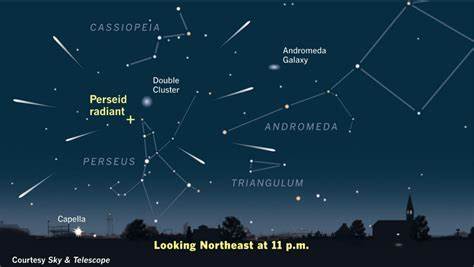The Perseid meteor shower is set to peak on the night of August 11 and continue into the early hours of August 12, 2024, with favorable viewing conditions extending a few days before and after the peak.
This annual event, known as the Perseids, can be observed from mid-July to late August each year. While the Perseids are a regular occurrence, there’s growing excitement for a potential Perseid meteor storm expected in 2028—definitely something to look forward to!
The shower is caused by Earth passing through the debris of ice and rock left by Comet Swift-Tuttle, which last came close to Earth in 1992. During the peak, Earth moves through the densest part of this debris cloud. In years without moonlight, the meteor rate can be higher, and during exceptional outbursts like in 2016, rates can soar to 150-200 meteors per hour.
NASA estimates that you can see up to 100 meteors per hour at the peak of the Perseids. Each meteoroid, as it travels through space at speeds of up to 133,200 mph (214,365 kph), becomes a meteor upon entering Earth’s atmosphere. These tiny fragments, about the size of a grain of sand, typically burn up before reaching the ground. If a fragment does land, it is termed a meteorite.
The Perseids are notably bright, with temperatures reaching over 3,000 degrees Fahrenheit (1,650 degrees Celsius) as they streak through the atmosphere, compressing and heating the air in front of them. Most meteors become visible around 60 miles (97 kilometers) above the Earth’s surface.



